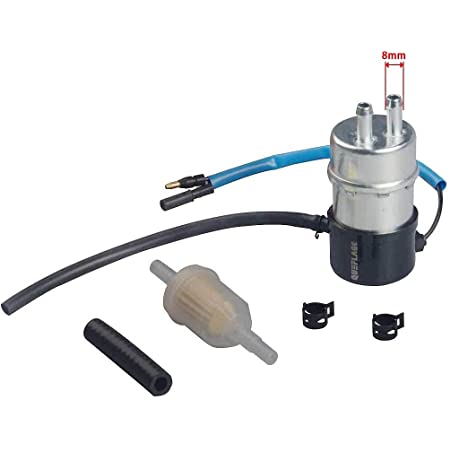The high-pressure fuel pump, in conjunction with the low-pressure fuel pump, is responsible for delivering gas from the canister to the vehicle’s engine. The malfunction of your mini high pressure fuel pump can have a considerable impact on the performance of your car. When the high-pressure fuel pump system fails, the following happens:
- The fuel pump will have a hard time supplying a steady flow of fuel to the engine.
- Its integrity will deteriorate, which is affecting its capacity to distribute fuel at the required pressure.
- The fuel pump motor’s performance is causing friction in basic requirements.
- The relief valve on the gasoline pump is not closing properly, allowing more fuel to be supplied than is required.
These issues, along with the symptoms indicated above, will eventually cause your car to stop working or stall regularly.
Propellant supply to Engine Isn’t Consistent
The engine cannot sustain motor ignition if it does not receive enough gasoline from the fuel pump system. Nor if it receives fuel at the wrong pressure. This eventually leads to mechanical failure, with the engine stalling or failing to start at all.
This could indicate fuel pump breakage, fuel pump aging, or even blockage of the circuit. The warning light will activate if you are not immediately notified of the problem by the mentioned symptoms, and it may be symptomatic of the described condition.
Fuel Pump’s Declining Quality
The aging of your fuel system can express itself in any of the problems mentioned below, but a splutter in speed is one of the obvious signals. Rather than stalling, the vehicle will rocket forward as if the gas pedal had been pressed. This occurs because some portions of the gasoline pump system are in a good situation than others and work at varying rates as the system ages. Conflicting engine stress can cause abrupt speed surges when driving, even if some elements are working perfectly and others aren’t.
Open the relief valve on the fuel pump.
The relief valve’s purpose is to help regulate pressure difference by closing and opening when necessary. If this pressure regulator fails, resulting in the valve staying open, the engine will receive an overwhelming amount of gasoline, reducing fuel economy and decreasing fuel pump flow rates.
How to Stay Away From It
The high-pressure fuel pump should last roughly ten years or 120,000 miles. Sadly, this is an issue that will only get worse over time. Still, there are several things you can do to help the high-pressure fuel pump last longer:
Change your oil regularly.
Because symptoms aren’t always visible, many individuals put off regular maintenance for as long as they can. However, if you don’t change your oil regularly, your fuel pump will eventually break down.
Friction in critical systems is caused by a lack of lubrication from suitable oil levels, which damages the fuel pump and necessitates maintenance. A decrease in oil lubrication can lead to higher heat, a sign that might present a challenge in the fuel motor pump and, eventually, system failure.










